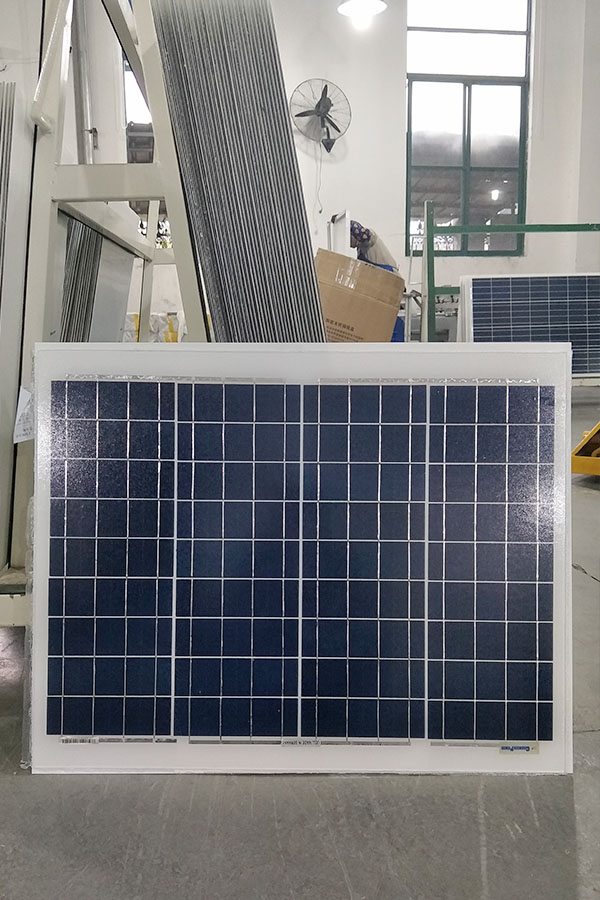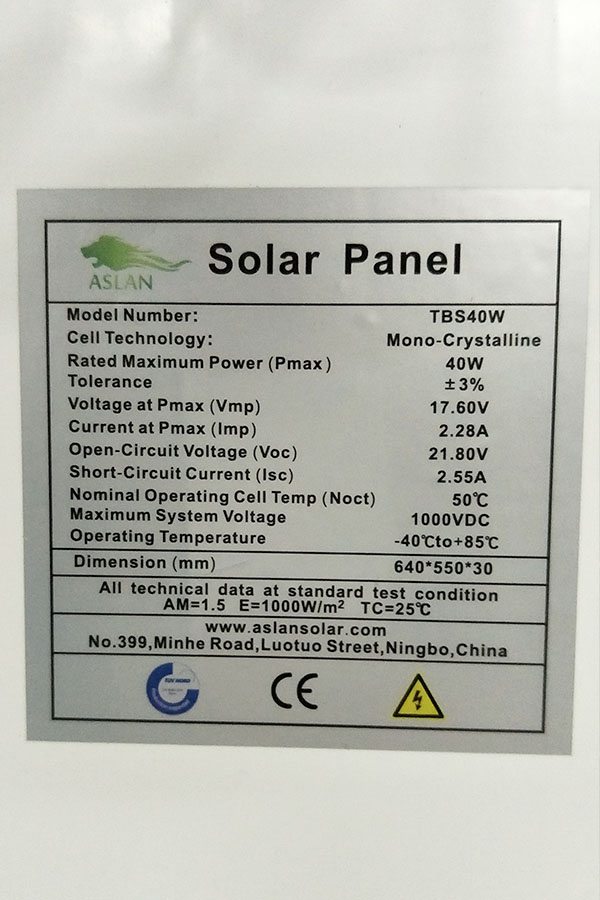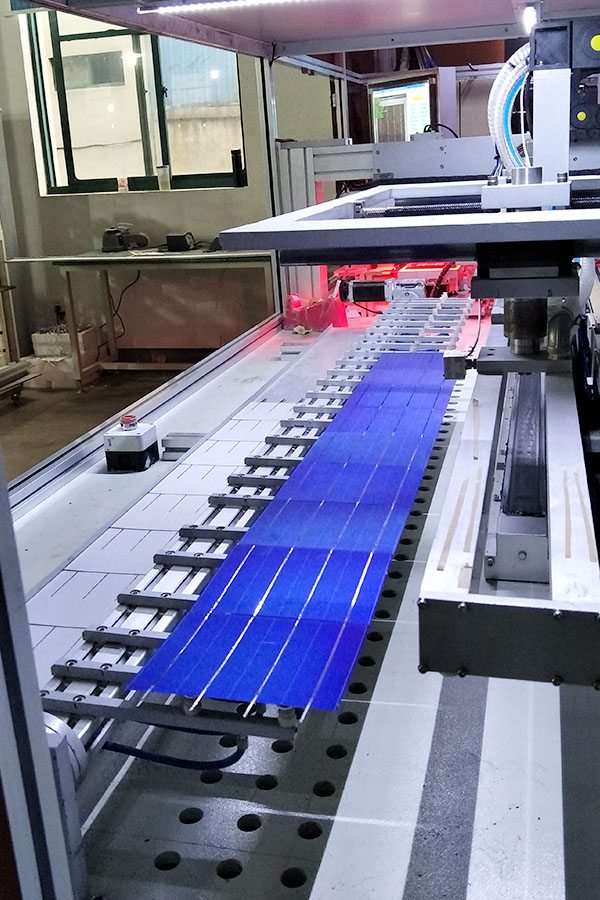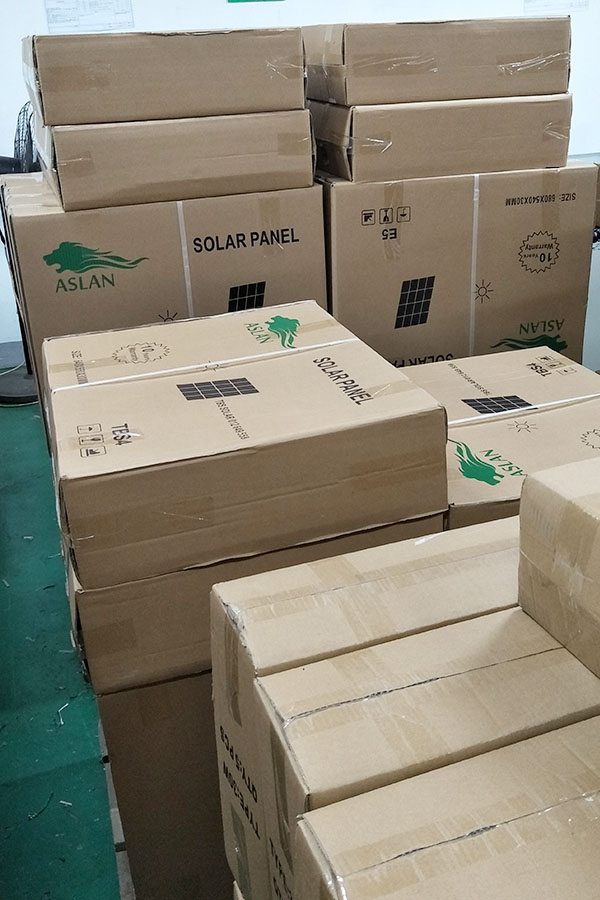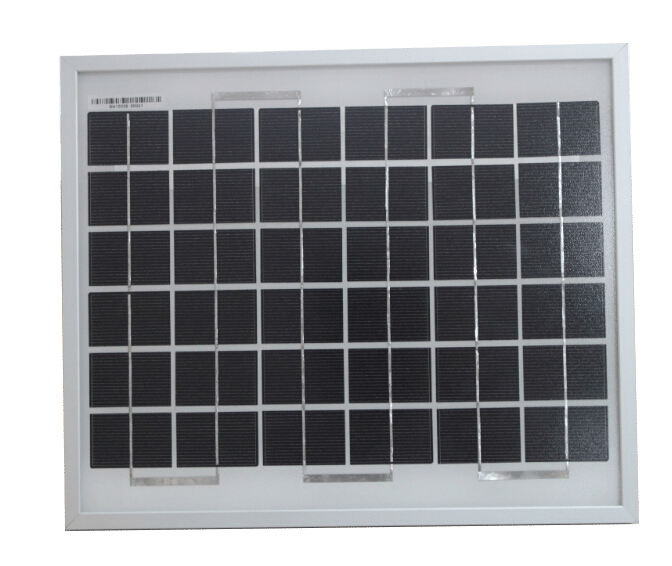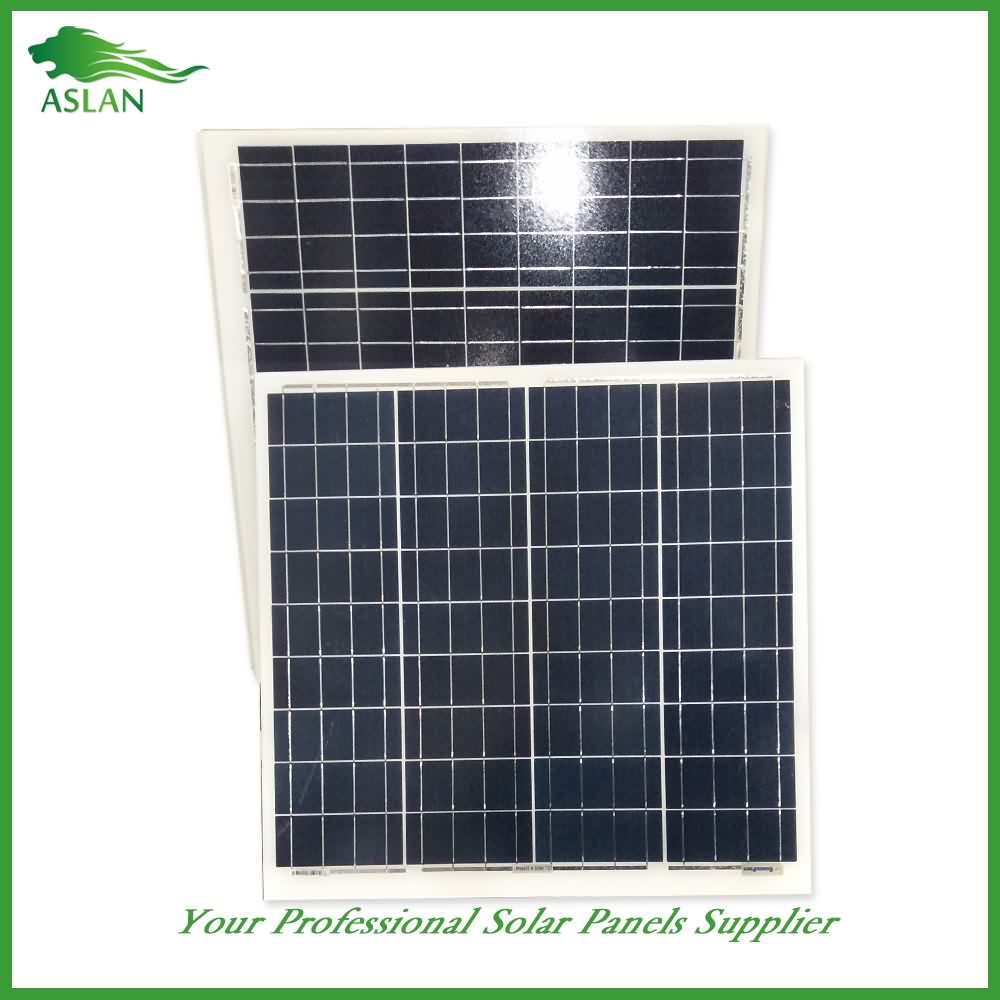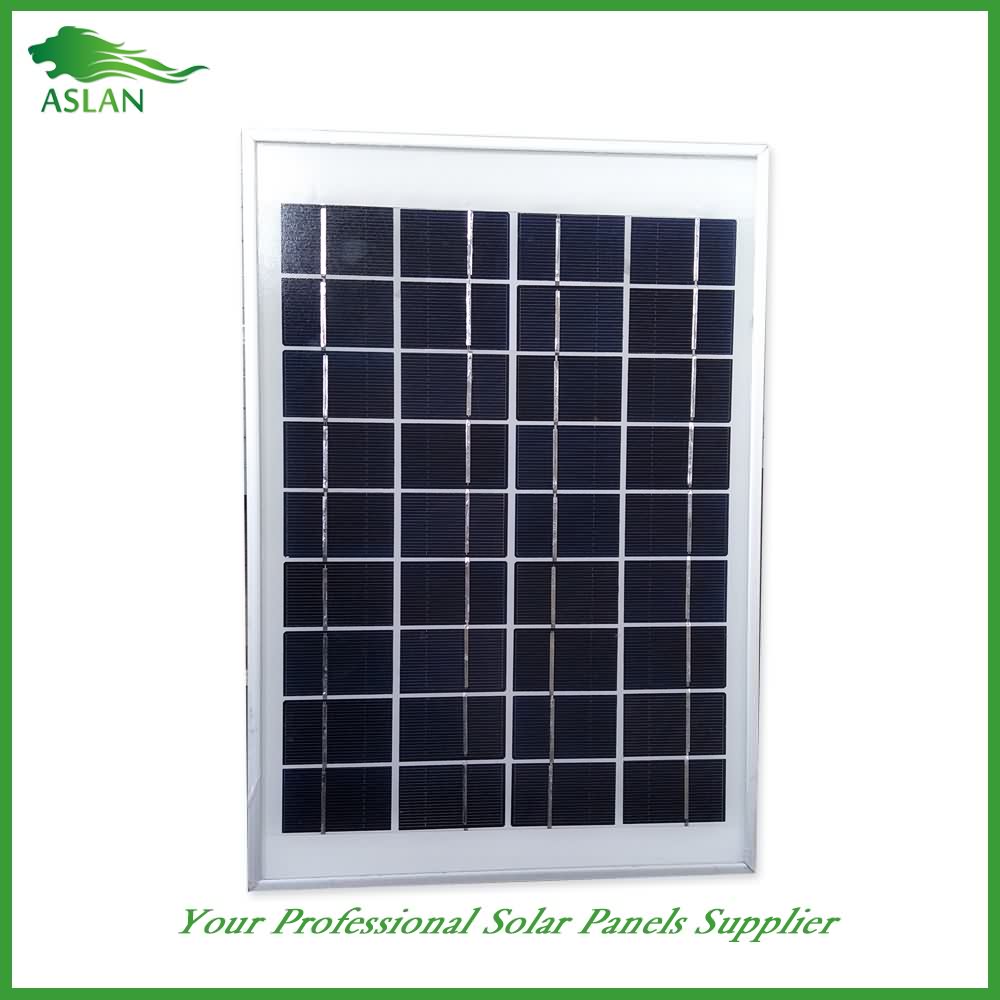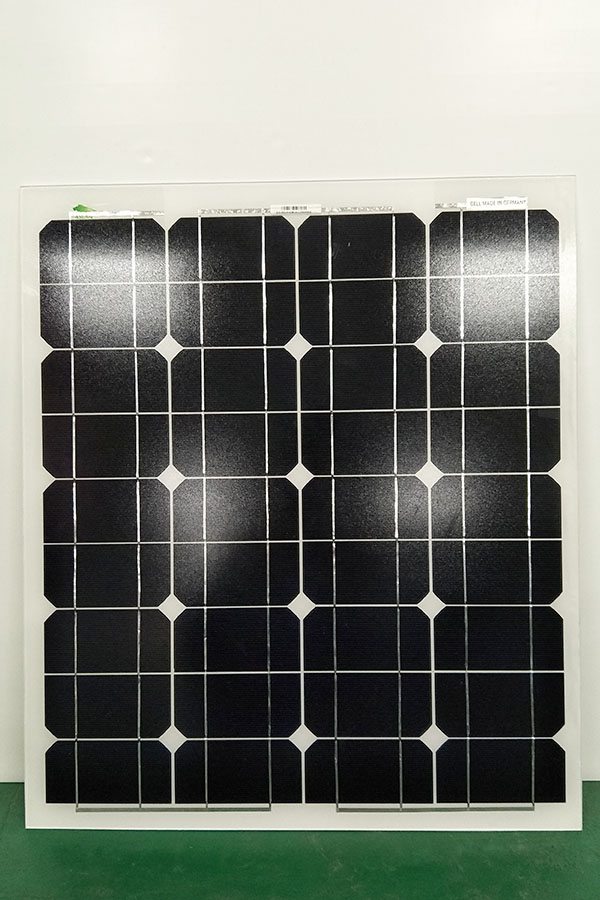Free sample for Poly-crystalline Solar Panel 40W Factory in Rome
Short Description:
Our company promises all users of the first-class products and the most satisfying post-sale service. We warmly welcome our regular and new customers to join us for Free sample for Poly-crystalline Solar Panel 40W Factory in Rome, We, with open arms, invite all interested buyers to visit our website or contact us directly for further information.
Poly-crystalline Solar Panel 40W
Technical parameter
Maximum Power(W) 40W
Optimum Power Voltage(Vmp) 17.35V
Optimum Operating Current(Imp) 2.31A
Open Circuit Voltage(Voc) 21.16V
Short Circuit Current(Isc) 2.53A
Mechanical Characteristics
Cell Type Polycrystalline 156 x 52mm
No of Cell 36 (4x9pcs)
Dimensions 670x420x30mm
Weight 4.0Kg
Front Glass 3.5mm,High Transmission, Low Iron,Tempered Glass
Junction box IP65 Rated
Output Cable TUV 1×4.0mm2/UL12AWG,Length:900mm
Temperature and Coefficients
Operating Temperature(°C): -40°C ~ + 85°C
Maximum System Voltage: 600V(UL)/1000V(IEC) DC
Maximum Rated Current Series: 15A
Temperature Coefficients of Pmax: -0.47%
Temperature Coefficients of Voc: -0.389%
Temperature Coefficients of Isc: 0.057%
Nominal Operationg Cell Temperature (NOCT): 47+/-2°C
Materials of solar panel
1).Solar Cell——Polycrystalline solar cell 156*52mm
2).Front Glass——-3.2mm, high transmission, low iron, tempered glass
3).EVA——-excellent anti-aging EVA
4).TPT——-TPT hot seal made of flame resistance
5).Frame——anodized aluminum profile
6).Junction Box——-IP65 rated, high quality, with diode protection
Superiority: high quality anodized aluminum frame, high efficiency long life, easy installation, strong wind resistance, strong hail resistance.
Features
1. High cell efficiency with quality silicon materials for long term output stability
2. Strictly quality control ensure the stability and reliability, totally 23 QC procedures
3. High transmittance low iron tempered glass with enhanced stiffness and impact resistance
4. Both Poly-crystalline and Mono-crystalline
5. Excellent performance in harsh weather
6. Outstanding electrical performance under high temperature and low irradiance
Quality assurance testing
Thermal cycling test
Thermal shock test
Thermal/Freezing and high humidity cycling test
Electrical isolation test
Hail impact test
Mechanical, wind and twist loading test
Salt mist test
Light and water-exposure test
Moist carbon dioxide/sulphur dioxide
http://thebushcompany.net
This set of 200W folding solar panels from The Bush Company are an outstanding solution to the need for effective and efficient portable solar power for your camping and touring set up.
These panels are built with Sunpower Solar Cells; “SUNPOWER” are world famous producing extremely high efficiency solar cells with excellent shade tolerance. The panels are monocrystalline with full copper backing. this means that they are not only flexible but also incredibly durable and will even keep working if you ‘accidentally’ put a hole right through one of the panels. When folded they are only 560mm by 570mm and the total weight is only 4.85Kg which is perfect for carrying in your 4WD, caravan or camper trailer.
The panels are rated with a peak output of 11.5Amps, but we have seen these panels produce over 13Amps in optimum conditions. Maximum output is governed by many factors such as temperature, available light and the state of charge of the batteries connected to it.
Head over to the The Bush Company website to find out more about these awesome 200W solar panels.
http://goo.gl/A0lRm
Photovoltaic technology has now developed to the extent that it is close to fulfilling the vision of a “solar-energy world,” as devices based on this technology are becoming efficient, low-cost and durable. This book provides a comprehensive treatment of thin-film silicon, the most prevalent PV material, in terms of its semiconductor nature, starting out with the physical properties, but concentrating on device applications. A special emphasis is given to amorphous silicon and microcrystalline silicon as photovoltaic materials, along with a model that allows these systems to be physically described in the simplest manner possible, thus allowing the student or scientist/engineer entering the field of thin-film electronics to master a few basic concepts that are distinct from those in the field of conventional semiconductors. The main part of the book deals with solar cells and modules by illustrating the basic functioning of these devices, along with their limitations, design optimization, testing and fabrication methods. Among the manufacturing processes discussed are plasma-assisted and hot-wire deposition, sputtering, and structuring techniques.
